Introducing Winbox software(2023)
Suppose your network is equipped with a Mikrotik router. In that case, you will need a great graphical tool like Winbox to monitor the traffic of each interface and configure and manage the Mikrotik RouterOS operating system.
After buying the Mikrotik virtual server, you need Winbix to interact with the router and apply various settings in the field of DNS, routing, and IP so that you can carry out the necessary actions more accurately using its simple graphical interface.
If you need this excellent tool for any reason and you want to know all its features and parts before using it, you are in the right place:
What is Winbox, and what does it do?

By purchasing a Mikrotik virtual server, users try to advance the routing and management of network interfaces more safely and stably, or who try to increase the flexibility and security of network interfaces by placing a router or system equipped with Mikrotik RouterOS in the network. Increase, they need Winbox software.
This software was created to simplify and speed up the RouterOS operating system configuration process. The importance of this tool becomes apparent when you have to use Telnet, SSH, browser (web fig), or console to perform simple tasks such as network traffic monitoring.
“Winbox for Mikrotik router is the remote desktop for Windows.”
Automatic storage of information, free and simple use of Winbox, and capabilities related to controlling and changing bandwidth based on user needs are some of the outstanding features of this tool, which in combination with other advantages such as safe and secure connection to the Mikrotik router, the ability to search in files, resetting settings and automatic software updates have made this software popular among Mikrotik router users.
Check how to enter the Winbox tool.
Entering the environment of this tool is done in two modes:
Beginning
First, you need to download the software from Mikrotik’s download page to enter Winbox by accessing Winbox Loader and entering the IP address or Mac router.
Clicking on the downloaded file will cause Winbox Loader to appear. This Loader has two modes, simple and advanced, and the default mode is simple.
Connect with simple mode.
When you run Winbox Loader for the first time, the following form, which corresponds to the simple mode, opens:
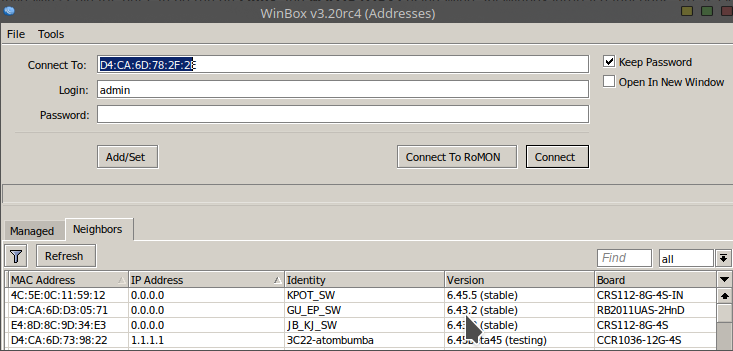
To connect to the router, you must first enter its IP or MAC address and then type the username and password in the corresponding field. Also, by putting: after the IP address, you can also enter the port number.
Finally, click on the connect button to connect to the router.
If you have already used this tool to connect to other routers, their list can be seen in the Neighbors section. To select the desired router from this list, it is better to hit refresh first, then click on its MAC address so that Winbox will connect.
* If the device in the Neighbors list is not compatible with Winbox, the connection is made through the web browser.
Simple mode buttons/checkboxes and fields:
Connect – connect to the router
Connect To RoMON – connecting with RoMON protocol for layer 2 and 3 access from one router to another.
Add/set – Save or edit saved routers in the Managed tab
Open In New Window – keep Winbox Loader open in the background and create a new window for connections made
Connect To – Mac or IP address of the desired router
Login – Username (username set during authentication)
Password (the password assigned to the user name during authentication)
It is better to point out that the Winbox username and password need to be set, and its default mode is without a password. When you want to run this software for the first time, you can log in with the router address and admin username (no need for a password).
Keep Password – save the password in the list
Items available in the menu section:
File
- New – Create a new managed router list in a specific location
- Open – Open a managed router
(The difference between a standard and managed router is in their control level. In this way, the managed router can better control the network and data frames in motion, while the unmanaged router controls the connection between two devices in the most basic state. possible.)
Exit – exit from Winbox Loader
Import – Import the saved session file
Export – export the saved session file
Move Session Folder – change the path of saved session files
Clear cache – delete Winbox cache
Check For Updates – check Winbox loader updates
Advanced Mode – activation/deactivation of advanced mode
Advanced mode connection
After you activate this mode, you will encounter more parameters and fields, which we will examine below:
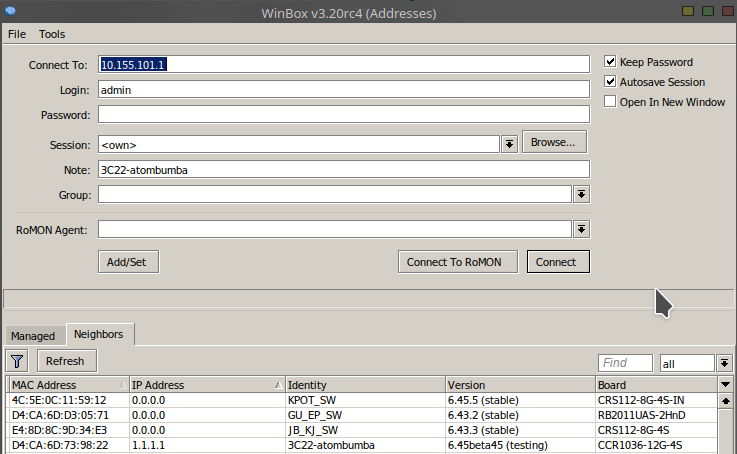
Advanced mode buttons/checkboxes:
Browse – search and select the file directory related to a specific session
Keep Password – storing the password in the list
Secure mode – use DH-1984 and RC4-drop3072 to encrypt and secure the session
Autosave session – save sessions automatically on devices
Advanced mode fields:
Session – saved session of the router
Note – A note assigned to the router’s storage
Group – the group set to the desired router
RoMON Agent – Select RoMON Agent from the list of available devices
Overview of the Winbox user interface
The user interface of this software is designed so that users can easily access the desired section.
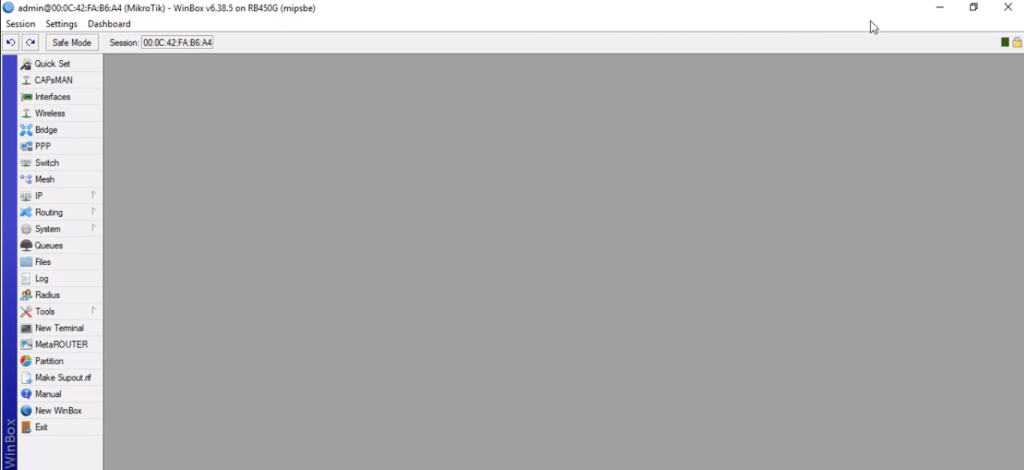
The title in the upper section is created in the following format and contains specific information sections:
[username]@[Router’s IP or MAC] ( [RouterID] ) – Winbox [ROS version] on [RB model] ([platform])
toolbar
The main toolbar is located at the top, and users can add various information fields, such as memory and CPU consumption,. This way, it is enough to right-click on the toolbar section and add the desired area.
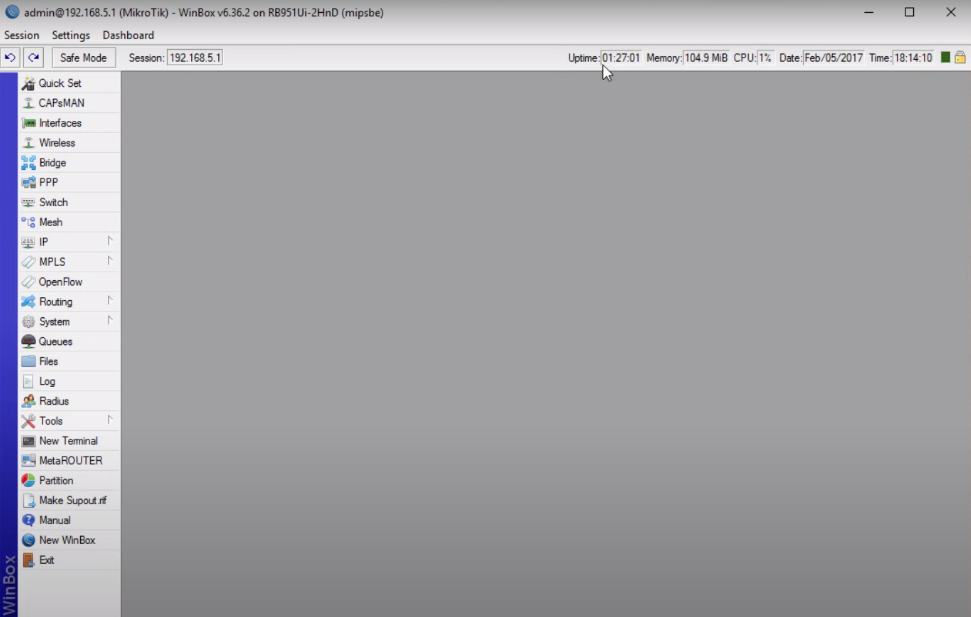
Of course, you can also use the Dashboard section to add these fields.
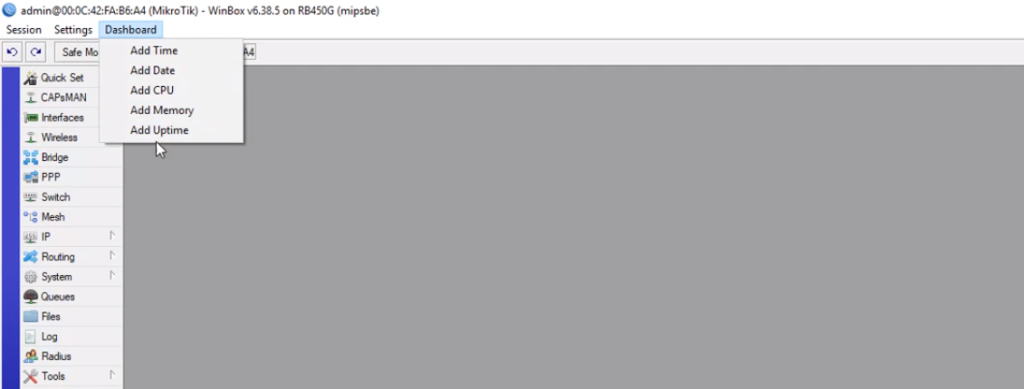
The redo/undo, safe mode, and running session ID fields are located in the left part of the toolbar. The fields of session encryption type and Winbox traffic (green square) are located in the right amount of the toolbar, and a toolbar in default mode has this These are fixed fields that other fields such as time, memory, etc. are placed next to them.
Left menu
This menu is the central part of Winbox, which covers all the features and capabilities necessary to configure and execute specific operations.
Quickset
It is the easiest method that a user can use to configure a router.
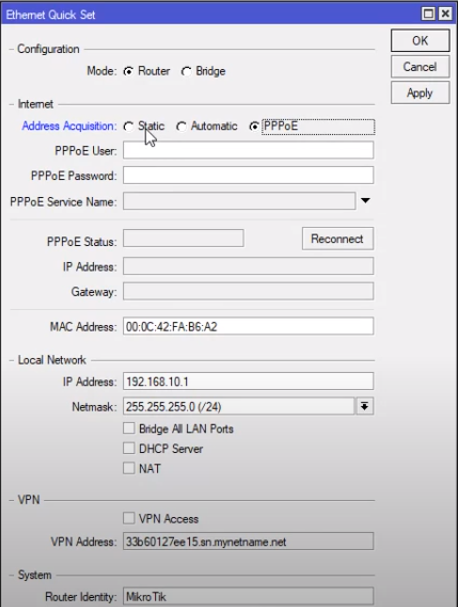
CAPSMAN
CAPsMAN stands for Controlled Access Point System Manager, which provides a simple way to manage CAPs simultaneously. A network with many wirelessly connected access points needs a CAPsMAN to manage and configure the access points.

Interfaces
Clicking on Interfaces will open a new window called Interface list. This list contains information about the interfaces in the network.

Of course, by using the icons on the top bar of this list, you can perform operations such as creating a new interface (+), deleting an interface (-), creating a comment, and sorting based on specific parameters.
For example, if you want to create a network interface that successfully passes through regular Ethernet bridges by creating a VLAN as a Layer 2 method, go to the VLAN tab and click +.

After setting the fields in the four tabs above (General, Loop protection, status, and traffic), you can click Apply and OK to be added to the VLAN list. If you click on the desired VLAN, you can use the Torch button to apply basic settings and necessary filters and click start.
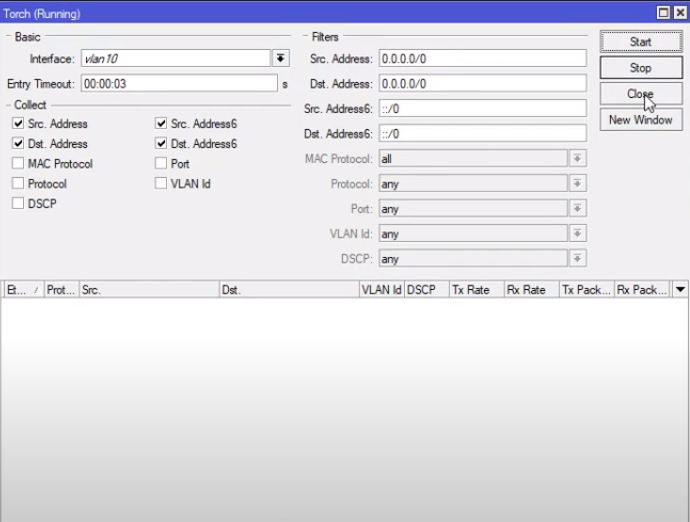
Wireless
Clicking on Wireless opens a new window called Wireless Table, which contains information about wireless cards and may be active or inactive. To activate them, click on the blue tick. It is better to ensure that the antennas are configured and connected before activation.
Click + to create a new Wireless. Next, you will come across three options: Virtual, WDS, and Nstreme Dual, which you can choose according to your needs.

Bridge
Connecting multiple networks isBridgewith Bridge. Before combining the networks, you must create a bridge and then click the desired networks as porBridgethis bridge.
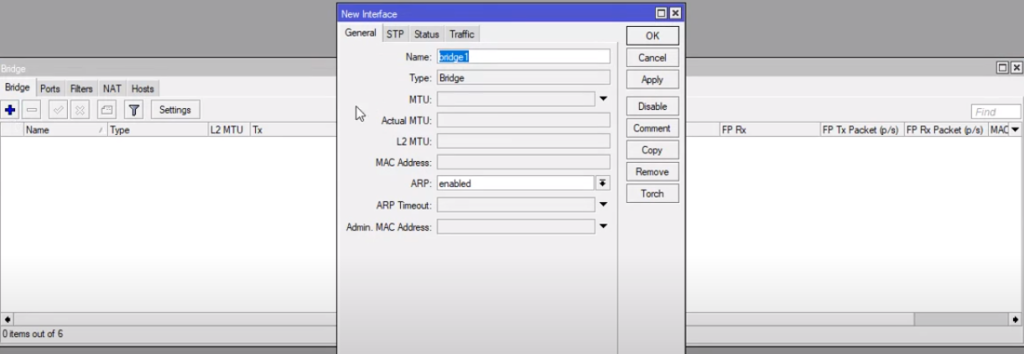
PPP
The PPP protocol is a standard method for transmitting layer three packets through point-to-point links. With the settings of this section, you can use Mikrotik as a VPN client or VPN server.

When creating a new interface, you will come across many options, including each of which you can read from the PPP page.
For example, a PPPoE connection provides you with a dynamic IP address to dynamically configure DNS and gateway.
IP
This section itself has a small sub-menu in which Firewall is also located in this sub-menu.

Each of these parts is used as a part of a general operation when performing a series of specific functions.
Example: Configure IP access
Since the mac connection is not very stable, you first need to create a router so that the IP connection is available. So you need to perform the following steps:
- Add interface and bridge ports
- Add IP address to LAN interface
- Setting up a DHCP server
You can see that you need three parts Bridge, Ip -> Addresses, and Ip -> DHCP Server to perform this task.
A firewall is one of the most essential items in this submenu, which is used to configure the router’s firewall rules.
Since the security of packets and unauthorized access to connected networks and the router itself is a critical issue, firewalls are used to prevent or minimize security risks.
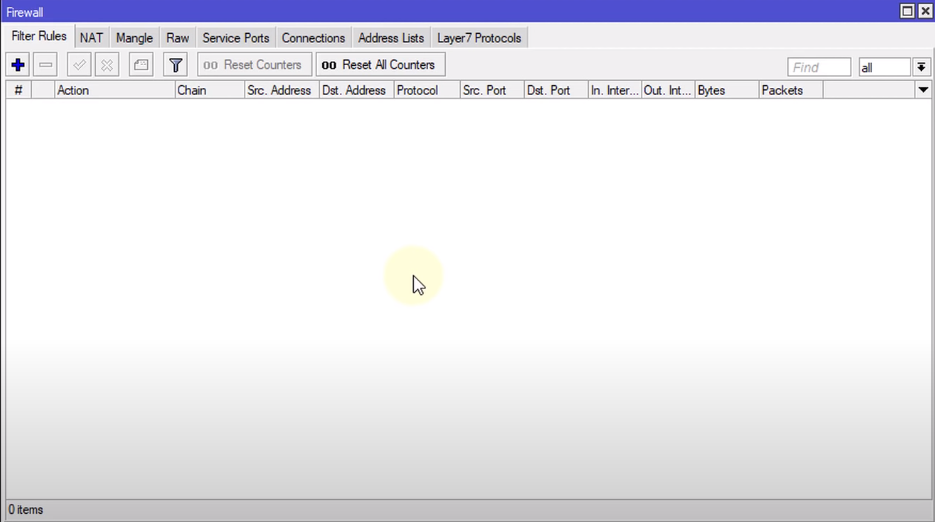
If you want to add specific rules to the firewall, copy the rules’ text, create a New Terminal, and paste the desired text in a new line so that the selected rules are added to this empty section.
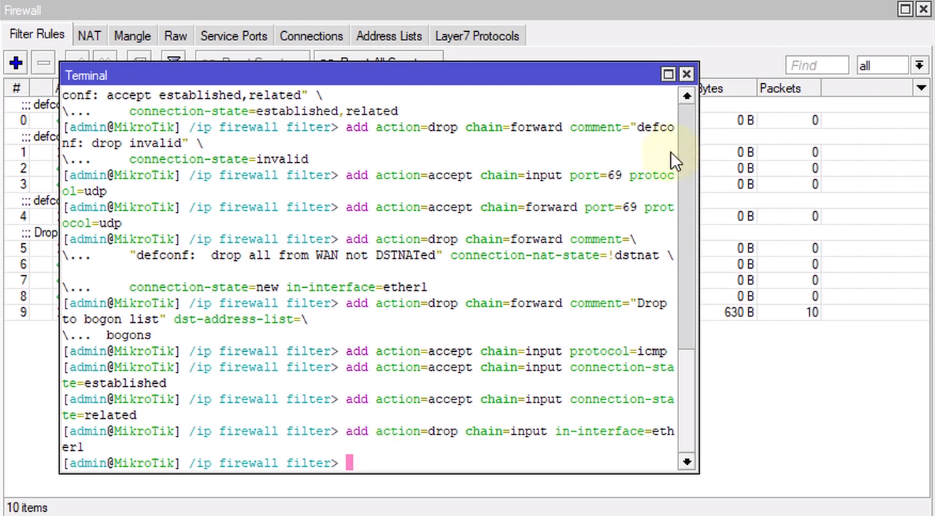
For example, the existence of the “drop to bogon list” law causes access to the list of addresses in the Address list to be blocked from external traffic.
The Routers section also contains a list of routers. You can use in the upper toolbar to perform operations such as adding a new router, activating or deactivating a specific router, and sorting the list based on particular parameters.
Clicking the + button will open the following window.
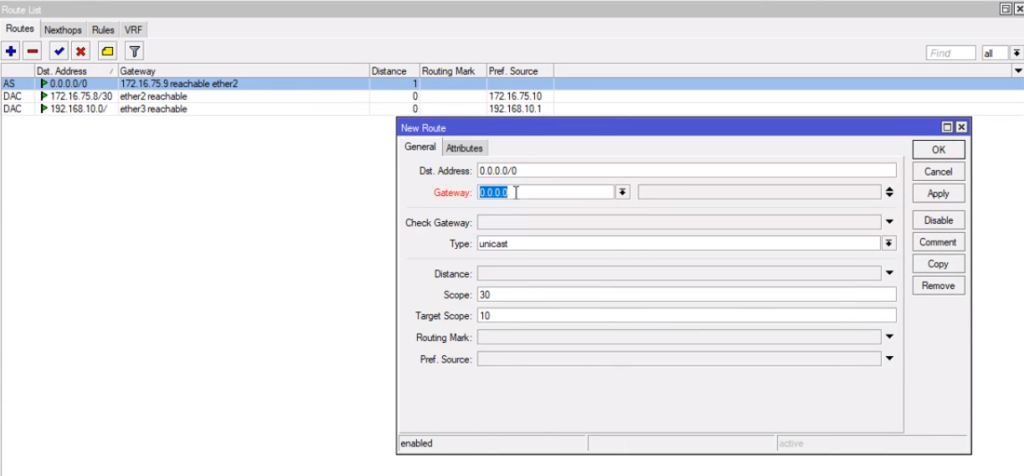
The web proxy at the end of the sub-menu is also used to block certain websites.
Routing
In the Routing section, routing protocols such as BGP and BFD are included. You can choose according to your needs and criteria and implement your desired routing method by applying advanced settings and necessary filters.
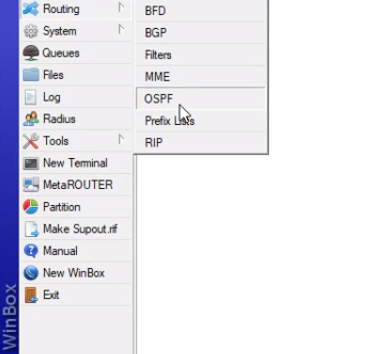
System
This section contains the settings and system reports of the router, which are combined with a sub-menu and independent items. Essential tasks such as setting the clock, and rebooting, and turning off the router are among the operations performed by this section.

The list of users with the possibility of adding authorized IP addresses and providing appropriate permissions for each and the section related to resetting router settings are more than the most used System sections.
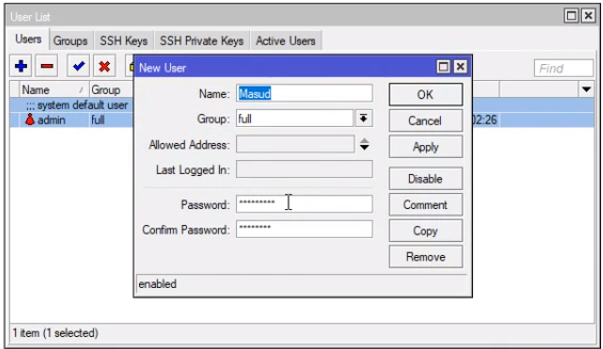
Queues
This section is used to limit and prioritize traffic. In this way, limiting the upload/download rate of specific IP addresses (users), applying restrictions based on time, or prioritizing some data flows, the router’s status can be controlled.
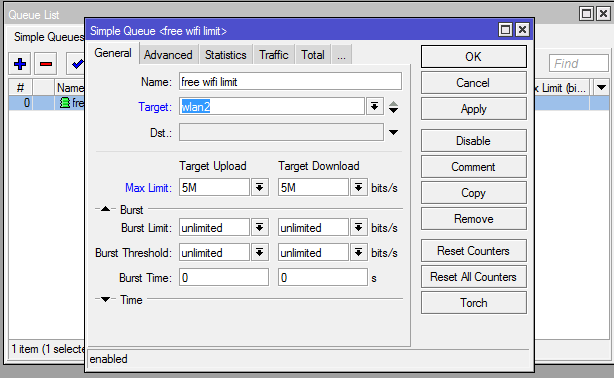
Files
This section contains all files of the router’s user space. Viewing and editing the file’s content or deleting the file is one of the operations you can do in this section. Also information about the package, such as architecture, construction date, etc., is located in this section.
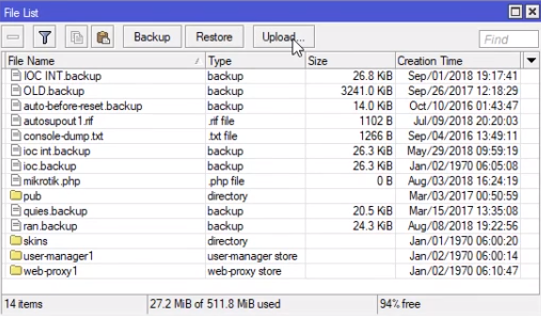
Backup, Restore, and Upload buttons, as their names suggest, help the router admin to manage essential operations such as backup.
log
This section shows information about various events and system status. These reports can be stored in RAM, disk, or files section. This saved file can be sent via email, or you can send it directly to a remote syslog server.
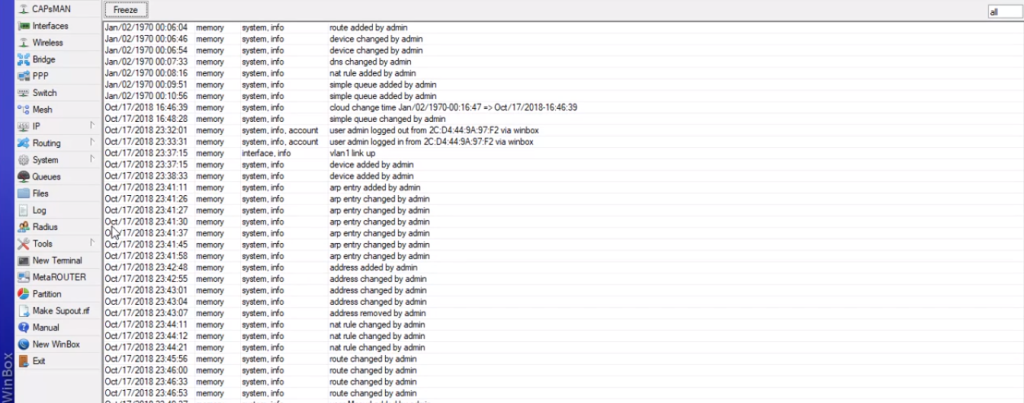
As you can see, each report contains the time and date of the event, the subject of the message, and the contents of the message itself, which are highly readable.
Radius
Radius is a remote server that provides the necessary facilities for the authentication and accounting of various network devices.
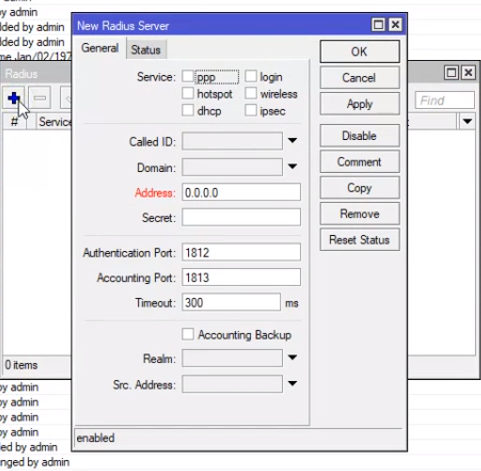
RADIUS server authentication and accounting allows the network administrator to manage PPP user access and network-wide accounting through a single server.
Tools
The Tools section has tools and programs that provide valuable reports to the administrator by testing the router’s performance from various aspects and monitoring the traffic.

New Terminal
The terminal is one of the administrator’s most valuable parts to execute the desired commands. Although most of the operations can be managed with the graphical interface, the user who feels more comfortable with controls can get help from this section.
For example, to view ping, you can enter the following command:
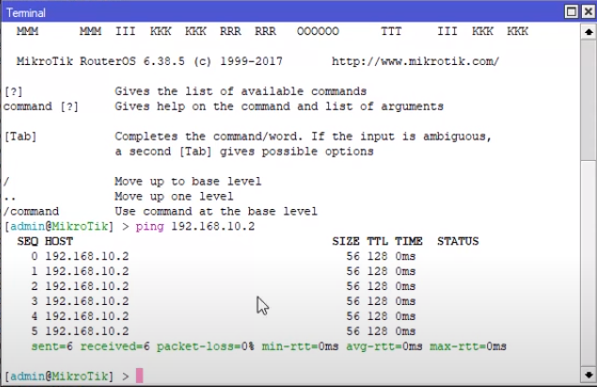
Metarouter
Metarouter is virtual router that run alongside the original Mikrotik RouterOS. If you want to use RouterOS and OpenWrt features simultaneously, this section can be helpful for you.
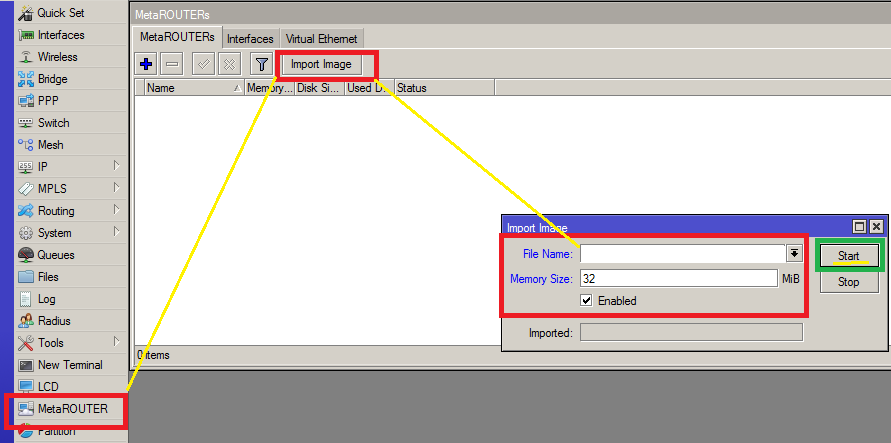
So, if you want to use two Mikrotik operating systems separately and simultaneously in one router, you should get help from Metarouter.
Partitions
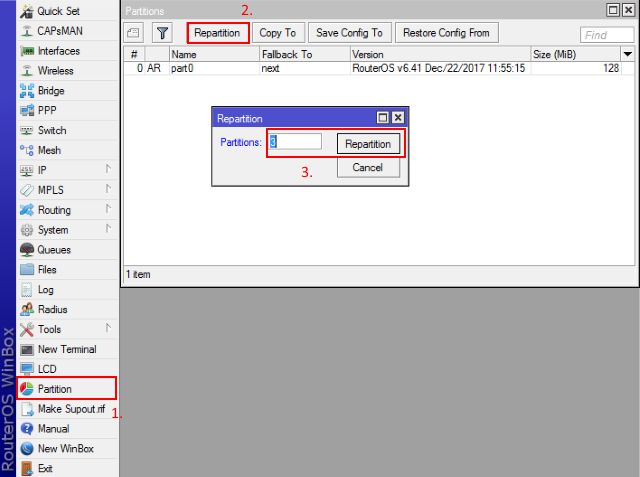
This feature is supported in MIPS, TILE, and PowerPC RouterBOARD devices. Using this section, you can install the operating system on any partition.
In this way, with partitioning, you increase the reliability of your work, and when one partition fails, the next partition is booted instead.
Make support.Rif
The support file is used for debugging MikroTik RouterOS and quickly solving questions. In this way, all the information about the router is stored in this file, and it can be downloaded after creating it by the Make support. rif section.
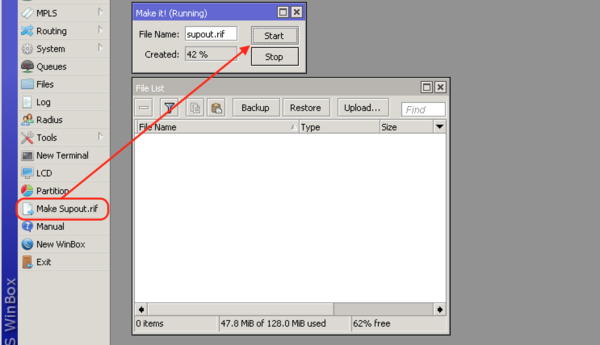
After specifying the file name and hitting start, the file containing the router configuration, reports, and other details will be prepared, which can be accessed by right-clicking on the file and pressing the download button or dragging and drop on the desktop.
In the end, the manual section provides an online manual on how to use Winbox, and New Winbox opens the window related to logging in and connecting to the router, which has two modes, simple and advanced. Exit is also used to exit the Winbox software.
Conclusion
Mikrotik router configuration and access to information about traffic and incoming and outgoing packets using an excellent graphical interface such as Winbox help the network administrator, which can quickly be done without the need to work with the terminal and execute special commands. Important operations will come.
Thank you for staying with us until the end of the article. We hope that reading this article was useful for you. If you have any questions, requests and need guidance, you can contact us by registering your opinion so that we can answer you as soon as possible.

